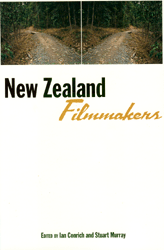
New Zealand Filmmakers
Edited by: Ian Conrich and Stuart MurrayWayne State University Press - Copyright 2007
Paperbound: $35us; 36eur; 23# - 229mm x 152mm - 396 pages - 51 illustrations
ISBN: 978-0-8143-3017-3; 0-8143-3017-7
New Zealand FilmmakersEdited by: Ian Conrich and Stuart MurrayWayne State University Press - Copyright 2007 Paperbound: $35us; 36eur; 23# - 229mm x 152mm - 396 pages - 51 illustrations ISBN: 978-0-8143-3017-3; 0-8143-3017-7 |